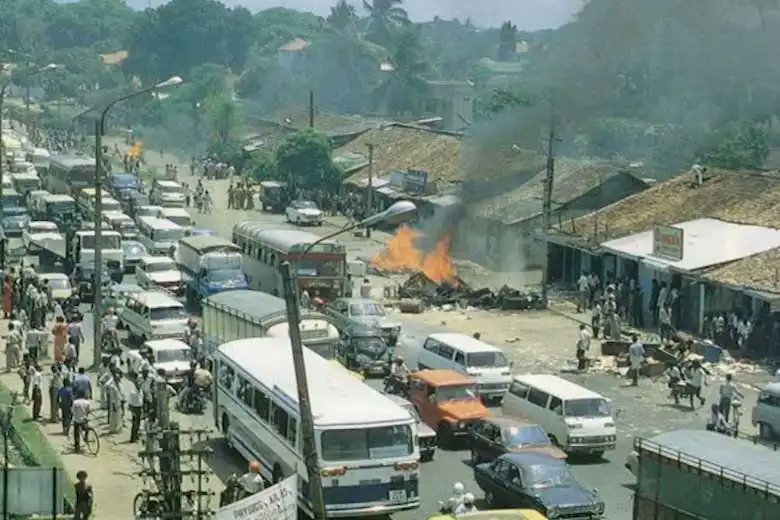There's been discussion over the symbolism in the Sri Lankan flag, so today, we're going to take some time discussing where it comes from and how this design came to be...
#Srilanka #EconomicCrisisLK #GoHomeGota2022 #History #SriLankaCrisis #SriLankaProtests



#Srilanka #EconomicCrisisLK #GoHomeGota2022 #History #SriLankaCrisis #SriLankaProtests




According to the Mahavamsa, the Sinhalese people descend from present-day Bengal. At this time, a supposed "lion-man" named Sinha had two children with a princess from Vanga, named Suppadevi. Their son, Sinhabahu would go on to found the city of Sinhapura and became king. 

After Sinhabahu died, his son, Prince Vijaya came to the throne but was seen as an unfit ruler. He was expelled from the Island with his 700 followers. He is said to have carried a flag with a lion depicted on it, referencing the "lion city", Sinhapura, where he came from. 

Centuries later, a Chola named Ellalan gained control of the Kingdom of Anuradhapura. In 161 CE, Dutugamunu challenged his rule in battle carrying a banner that depicted a lion holding a sword in his right paw underneath the sun and the moon. 





While other animals were also used, the original flags and the lion symbolism from the Kingdom of Anaradhapura became inspiration for numerous flags for Sinhalese kingdoms throughout the years. By 1815, in this was the case for the flag of the Kingdom of Kandy that fell in 1815. 

During the colonial rule, the flags used were often just those of the colonizing nation or entity. The Dutch used the flag of the East India Company (VOC) and the British employed an ensign flag starting in 1875. 







By 1948, Sri Lanka had achieved its independence from the British. On 4 Feb, the Union Jack was lowered and replaced with a flag similar to that of the Kandyan Kingdom from over a century ago. However, in the north the Nandi Flag that the Jaffna Kingdom used was raised.
In March 1948, a national flag committee was formed to come up with a new flag for the Dominion of the Ceylon. To be more inclusive, they modified the on that was raised on independence day and added a orange and green stripe to represent the Tamil and Muslim communities. 

Later, in 1972, when the Sri Lankan republic was formed, the flag was modified again at the 4 pinnacles that were placed at each of the corners were replaced with Bo leaves (a historic Buddhist symbol referencing the leaves of the tree Lord Buddha where he gained enlightenment. 

For many today, the flag can be a controversial symbol of the country. For many Tamils, the flag encompasses the brutality of the Sri Lankan military during the civil war and the marginalization of minorities, However, for others it's a deep symbol of pride for the island nation. 

The history of this flag and it's evolution is deeply rooted in the Sinhalese ethnicity. Many believe it can be more inclusive to all of Sri Lanka's ethnicities. By taking a look at our past, maybe we can use old symbols to create a flag that represents the entire country. 

• • •
Missing some Tweet in this thread? You can try to
force a refresh





























